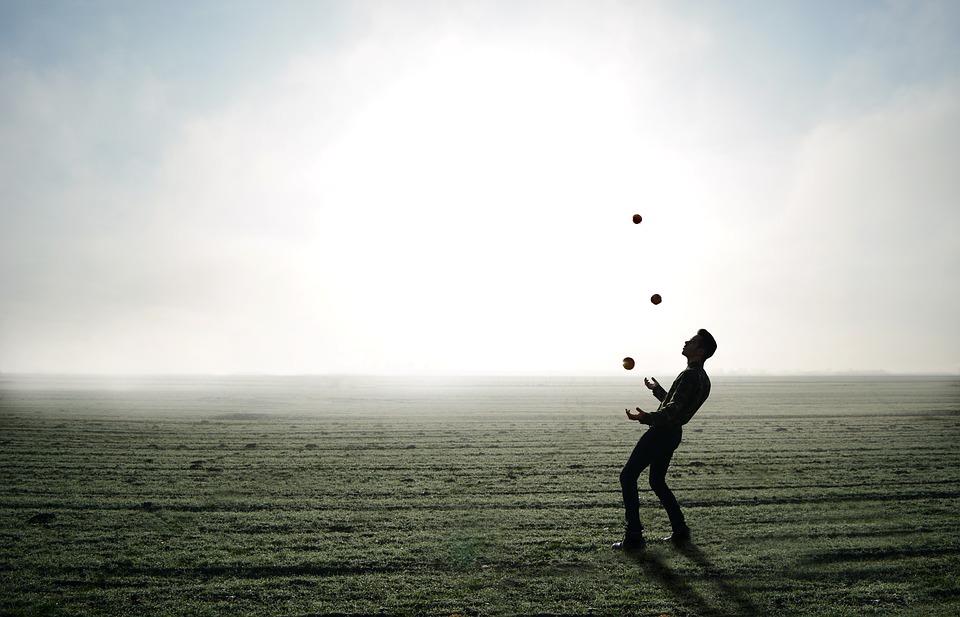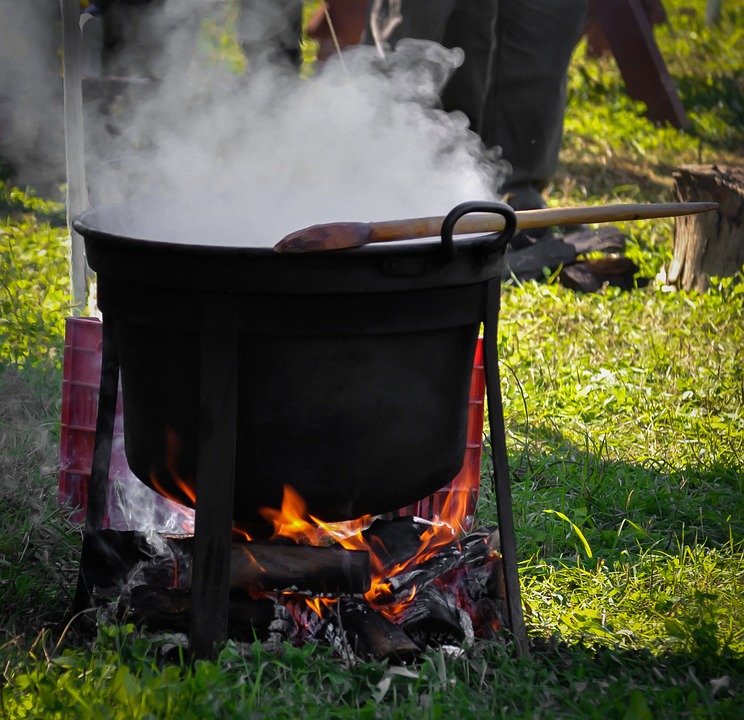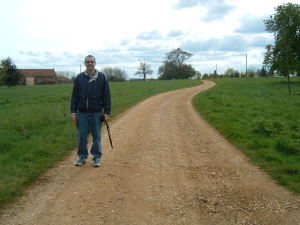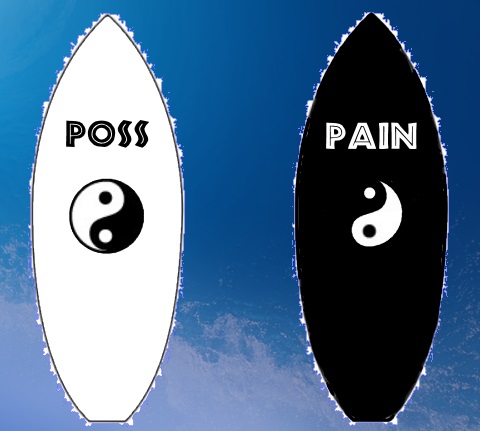
This Present, Precious Moment of Living, Loving and Learning.
Because: Life is Precious. Luxuriate in Possibilities.
Worry is Counterproductive. Quit Wallowing in Catastrophe.
Welcome!
Here are some of my insights and observations about life and success.
“We have all heard the expression “Life is a journey, not a destination.” Really embrace it. Surely the key is to enjoy the journey, enjoy the experience. Be in and enjoy the present moment.” Neil Paddock.
Back in May 2013, after some reflection, I wrote:
“Focus on what is possible, not what’s painful. Possibilities are meant to be languished in and savoured like a luxurious bath. Painful thoughts should serve purely as a momentary warning, to be processed and dismissed thereafter, like touching the side of a hot kettle, and quickly pulling away. They are not meant to be wallowed in any longer than you are meant to keep your hand on the kettle.” Neil Paddock.
The Boardwalk
Imagine that every morning when you get up that you can choose which side of the bed to get out of.
The side you choose to get out of determines what kind of day you are going to have, and over time will define what sort of life you have.
On one side (the “right” side), there’s a gleaming white surf board (We will just call it the Whiteboard), emblazoned with the Yin-Yang logo and the word “Possibilities” clearly visible, right on the very front.
On the other side, there’s an identical surfboard, in shiny black. We’ll call that the Blackboard. It is emblazoned with the Yin-Yang logo and the word “Pain” clearly visible, right on the very front.
Surf’s up!
It’s all black and white – Pain and Possibilities
These aren’t just ordinary surfboards though. The Whiteboard has a luxurious onboard Jacuzzi. You can climb into it and simply luxuriate in all the possibilities you have for that day.
You tend to have predominantly positive thoughts and experience positive feelings as your focus is on the “Possibilities”.
In contrast, the blackboard has a black steaming cauldron. It’s not actually boiling though, it starts off being a bit uncomfortable, like a bath that’s slightly too hot, but you can still get in without too much difficulty and you can adapt to the level of discomfort enough to tolerate it once you get in.
There’s a base level of physical discomfort which is tolerable, but is noticeable enough to get you focusing and thinking about “Pain”.
So you now tend to have predominantly negative thoughts and experience negative feelings as your focus is on pain you are experiencing right now, the pain you have experienced in the past and the pain you may yet experience during the course of the day.
Speed of movement and testing the temperature
Now a while back I imagined myself luxuriating in a warm bath of possibilities. Then I imagined myself putting my hand on a hot kettle. I also saw myself pulling my hand away very quickly. This is because I often check the kettle to see if someone else has recently boiled the water, so that I don’t have to warm it up again. I do this by placing my hand on the side, for a split second. That is enough to test the temperature, and I can move it quickly enough to not injure myself and burn my hand in the process.
I figured that we are only meant to tolerate pain for very short periods – if we are experiencing negativity or pain, we should seek to let it act as a warning, move through it quickly (like taking my hand off the kettle) and get back to luxuriating in possibilities.
But some people just stay there. That’s where they spend their lives. On the blackboard. In constant pain.
It’s our job, as I see it, NOT to wallow or luxuriate in pain. There’s simply no need to. Pain is simply to get us moving when we stand still for too long.
Doing Porridge!

Now let’s say that I am on my chosen board (be it black or white), in my chosen water receptacle, be it cauldron or Jacuzzi, and I want some sustenance – so let’s have some porridge!
I now start to consume porridge in a similar fashion to the temperature and the time I spend on each board.
If I am like Goldilocks I will ask myself: Is is too hot, too cold, or just right?
Now suppose there are two different batches of porridge. One is slightly tainted and sour but high in nutrition, and the other is delicious but full of unhealthy, potentially life threatening ingredients.
Do I stay with what’s simply delicious and what I know doesn’t serve me long term? Or do I wake up to what I am doing and change (i.e. actively manage) my conditions, and get back to eating something more nutritious – which I know will help me to live longer, healthier and give me a better overall life experience?
Will luxuriating in a warm bath and luxuriating in eating delicious porridge – high in saturated fats – prolong my overall life experience?
A pattern starts to emerge. And here’s the challenge.
Because conditions change over time, we have to (continuously and actively) manage our environment and our choices. Our wants and our needs. And manage the conflict that inevitably arises between them.
Passive versus Proactive – the path of least resistance
We can choose to do that passively, like a missionary being cooked in a pot by cannibals (and become a victim of circumstances) or a frog in a pot, or we can choose be our own live action hero, that shapes his environment and experiences based on what he wants, and do it actively, or even proactively.
We always have a choice. We can choose what to think, and perhaps more importantly, what to do about what we think. We can choose appropriate action to take. I call taking action – “turning up the heat”. There are two very good reasons for doing this.
1) Action destroys fear
Well, more accurately, right action or appropriate action destroys fear. Do we always know precisely the right action to take?
Of course not.
2) Action destroys pain.
Well, more accurately, right action or appropriate action destroys pain. Do we always know precisely the right action to take?
Of course not.
Trial and Error
We need to try stuff and find out what works in our favour and what doesn’t.
Because, taking some action can be a lot better than taking no action at all, even if it isn’t quite the right thing to do.
At least it gets you moving.
Once we are moving again, we can take more action based on what we know does actually work, and less action based on what we know doesn’t.
We have to check the temperature, the nutritional content, and occasionally tolerate discomfort for a short period in order to get something we didn’t have before, like a new skill set, or a new partnership or relationship.
So we need to (actively or proactively) manage the thoughts we have, the time we spend with them and their temperature. Because they will affect how we feel, what we choose to do and choose not to do as a result and will ultimately over time determine our quality of life – for good or ill.
The bottom line is: Life is complex.
It’s our mission to understand it and keep it simple enough to manage on our own terms. We have to learn enough about life and ourselves in order to experience better quality of life. And that is a worthy mission. Full of possibilities to luxuriate in. And that’s what makes life worth living at an exceptional level. Because we are worth it!
When I started developing these ideas I envisaged a course to take and a “right” path to stay on, like following the Yellow Brick Road. There’s a certain rigidity or stability gained in staying on the path (or on the correct board, in this case) and also a huge emphasis of moving, moving forwards.
Moving and Standing Still

But there is another layer to consider. A life skill to develop. Of moving AND standing still. Of knowing when to do both, and for how long.
Of surfing. Whilst taking a nice warm bath. I think the model captures what we need to do. Two things at once that appear to contradict each other.
Moving forwards and taking action and continuing to enjoy the moment and fully explore all your possibilities. Don’t make life robotic and too predictable. That’s just boring.
1) Taking appropriate or right action [moving forwards] AND 2) Staying still – In the moment – just long enough to focus fully on all your possibilities, and specifically which one is most likely to serve you best in this moment, and taking time to luxuriate in those possibilities AND your actual physical accomplishments.
2) Taking time out to enjoy what you just experienced, what you are experiencing and what you may yet experience within your current environment – with your family, friends, associates and simply enjoying the natural world around you too. My old company called this Reward and Celebrate!
Party Time!

It’s not all about running to the finishing line of life as quickly as possible and missing the sights and sounds along the way. That would be missing the whole point of enjoying the journey.
Revealed in 3 words: What’s the meaning of life?
I once found a tome in a Norfolk bookshop that purported to tell you the answer to any question you wanted to ask, just by thinking of the question in your head, and then opening the book at a random page. I now have absolutely no idea what the book was called, or who wrote it.
So I asked myself “What’s the meaning of life?” (No biggie then). I took a deep breath, and opened it, full of expectation:
It simply said 3 words on the page.
Enjoy the experience.
I thought: “Is that it?” It felt a bit of an anti climax.
I didn’t really believe it at the time, but in all the years since that I have thought about it, I have never found a better answer.
It all depends on context. A creature like a lion moves to catch prey, and stays still to digest it.
A prey animal runs like hell to escape being eaten, or hides in long grass motionless to escape detection.
It’s not a case of toggling action and inaction.
For me inaction is always based on fear and hesitancy, and it keeps you where you are, unable to move forwards. It’s frustrating.
It’s only when you had had an absolute gutful of being immobile (or bashing your head against a brick wall, so to speak) that something kicks in to get out up and out of that hot water, so you don’t simply get slowly boiled to death. You wake up to the heat and act accordingly.
A reality check
We don’t really know what colour our board is, and in fact, the vehicle we are on may only meet our needs for a finite time. So the white becomes the black. We need to be able to recognise the colour change and the temperature change and the taste of our porridge, and do the best job we can with the information that we have. So let’s try to be as accurate and objective as possible about how we tell ourselves the news about our given situation.
Let’s not wallow in our own imagined worst case scenario.
Being objective and rational (rather than emotive and hysterical) about the true facts (and not the imagined fantasy) of our situation helps us find a better vehicle to move forwards with, to wake up to the heat – and act accordingly.
So here’s this short philosophy of life.
If we take The Meaning Of Life as described above – to Enjoy The Experience – as our worthy goal of choice, then we need to think about three things:
1) Gaining new experiences (Setting out to do something we haven’t done before – and setting a goal to get there)
2) Learning how to fully enjoy the journey (enjoying the whole process of setting out to gain the new experience )
3) Learning how to fully enjoy reaching our destination (Taking time to say “Hey! We did it!”, and enjoying the accomplishment)
To actively seek out new experiences, and to figure out how to feel positive about the entire process – not only for when we get there, but from the very moment we set out to experience them – the whole process of “getting there” too!
I would venture that Enjoying The Journey is just as important, in fact probably more so – as it always takes longer to get there than it does to arrive! So why cheat yourself out of the pleasure of enjoying that too?
I am suggesting we set out to enjoy the journey too – all of it – warts and all – not just the destination, not just the end goal or arrival point, not just the tick in the box.
Otherwise it becomes: “Right. Been there, done that. Next?”
Here Be Dragons

There’s an Acceptance and Commitment Therapy (ACT) challenge here: Can we learn to fully embrace failure, feeling stupid, vulnerable and inadequate and accept those feelings we have as valid, temporary, and specific? Can we accept that they will come and go, like the weather, as we struggle with new challenges, take risks and learn new levels of patience, tolerance, self-compassion, forgiveness and resilence as we venture into unknown territory to continue to grow and get what we ultimately need most? Russ Harris (2006, p. 8) says the essence of ACT is to “Embrace your demons and follow your heart.” Can we learn to love the journey, every day we are alive?
Child in car: “Are we there yet, Dad?
Dad: “Shut up and enjoy the journey.”
Ask yourself: Which board are you on? Whiteboard or Blackboard? Are you luxuriating in possibilities, or are you hanging on in quiet desperation and tolerating low levels of pain that you have gotten used to over time? Are you wallowing in a streaming cauldron of pain?
If so, why?
Liken temperature to time.
The bath and the cauldron/kettle

Luxuriate in possibilities like you would in a warm bath…but don’t mistake the bath for the cauldron, and learn to simply tolerate the pain – – that’s not what life is about or what you were born to do – jump right out of that cauldron, or take your hand off of that hot kettle before it burns you!
Luxuriate!
If you want to bathe and luxuriate in Possibilities, don’t make the water too hot. Take your time. Relax and enjoy it. Immerse yourself fully in the experience. It’s how you will experience the most happiness and fulfillment. Stay with the experience long enough to see it through, even if the water does get a bit hot at times. Simply add some cold (manage the temperature and how long you are immersed in the experience) and stay with it for as long as you can.
Be in the moment…
Conversely, if you want to minimise the time you spend in Pain, you may have to turn the heat up yourself, and get the hell out!
When the moment no longer serves you…
Get out of the moment, into a better one!
I think we all need to do that at times. Go and find a nicer pot. Where you control the temperature, and how long you stay in it, not somebody else.
For me, that really is the essence of regaining control over ourselves, our environment and our lives – if and when we do go off the rails or when somebody moves the cheese from time to time – and ultimately determines the overall quality of our life experiences.
| I | II | III | ||
| Porridge-O-Meter | too cold | just right | too hot | |
| Nutritional value | lo – med – hi | lo – med – hi | lo – med – hi | You choose! |
| Temperature | tolerable | luxurious | intolerable | |
| Possibilities | underwhelmed | The “Goldilocks” Zone | overwhelmed | |
| Pain | tolerable | uncomfortable | boiling |
Footnote:
It might be blatantly obvious, in case it isn’t though – where I am using the words “Possibilities” and “Pain” – you can substitute them for “Positivity” and “Negativity”. I have also chosen to associate the word “luxuriate” with all of the positive possibilities of the warm white Jacuzzi, and the word “wallowing” with the all of the negative pain we might experience from being in the black, steaming cauldron.
I studied Neuro Linguistic Programming (NLP) a few years back and based on those teachings, I have come to believe we all have what is effectively a built in Newsreader (i.e. our inner dialogue or self talk). It tells us about what is happening to us, and it is framed in a particular way (positive or negative), according to our default “explanatory style” . Our explanatory style can either be pessimistic i.e. permanent, pervasive and personal, or optimistic, i.e. temporary, specific and external (Seligman, 1998).
The quality of our inner dialogue [how we tell ourselves the news, and how we receive it] determines how we feel, and thus dictates the quality of our emotional life.
[THIS IS HUGE, by the way, HUGE] and this in turn determines what we choose to do or not do as a result of how we feel about hearing the news.
It’s so huge it’s worth saying again.
The quality of our inner dialogue dictates the quality of our emotional life.
How we tell ourselves the news (about what we experience) is probably the biggest factor of all in determining our quality of life – because how the message is received is hotwired directly to our emotions. Once we have influenced them to go off in a particular direction, our course for the day (week, month, year, lifetime) is pretty much set.
Which board are we travelling on today? Black or White? Possibilities or Pain? Positive or Negative?
If we talk negatively to ourselves then we are likely to feel negative!
Bluntly, if we talk crap to ourselves then we are likely to feel like crap!
For a moment, for an hour, for a day, for a lifetime.
And it falls to us to change it. To break the ever decreasing circles we can find ourselves falling into. Old negative habits. Repetitive habit patterns of thought that direct us – without our conscious knowledge.

And in my experience, some people have unfortunately turned that into a whole way of life. They talk themselves out of being happy, They talk themselves out of doing things they want to do, and experience life as victims. A permanent stay in the Cauldron.
If we find ourselves being moody, unhappy down or just a bit negative – I think we need to change that newsreader for a happier one!
Smile! : )
One final thing – The conclusion
If you have got this far, then thanks for staying with me.
If there’s one thing to take away from this post I believe it is this.
1) Do more of this: luxuriate +
We really do need to luxuriate in our warm bath of Possibilities (positivity) – which may get a little too warm at times – and stay with it for as long as possible – for the duration – if we possibly can. We might feel like jumping out (because it can get a little scary at times) but it’s better to stick with it if you are pursuing something worthwhile. Something positive. A worthy goal. Knowing your values can help with this.
When you realise you are luxuriating… Stay with it. Right Now. Be In the moment.

2) Do less of this: wallowing – [AND Do less catastrophising – AND engage in less vitriol -]
When we are feeling negative and focused on pain – we effectively wallow in our own “filth” (or least our own filthy and negative thoughts) like a pig in poo (only we ain’t so happy), like the poor missionary in the cauldron being warmed through for dinner, or even the frog in the pot that’s started to get boiled without noticing. We delude ourselves we are okay and we stay there because it is (just about) tolerable. But how are we really feeling? Good or Bad?
It’s not okay. That’s no way to live. We have to recognise where we are and jump the hell out, and find something better.
When you realise you are wallowing… Stop it. Right Now! Be in a better moment. Change what you are focusing on.
3) And we have to learn how to distinguish luxuriating (in what we already have in our lives) from wallowing (and lamenting about what we don’t have). And that only comes with experience.
Of learning how to switch. It’s our job to switch (boards) when we catch ourselves wallowing. Make a mental leap from one to the other. Because just like in the picture, the two boards will run side by side for the rest of our lives. It’s our job to pick the right one to spend most of our time surfing on. And sometimes, we might just have one foot on each.
Because in the real world, it’s not all black and white. And it rarely stays the same for long too.
So we must learn to switch:
From Black from White.
From Negative to Positive.
From Pain to Possibilities.
From overwhelm to inspiration.
From worry about the past to anticipation and excitement about the future.
From imagined catastrophe to real progress.
To glean positive learnings from negative experiences.
The extent to which we can tell which one we are doing (wallowing or luxuriating) in any given moment will help us get back on track to having a fuller, more rewarding life that’s worth celebrating.
And how will we know? Simple. Just Ask.
Which board we are on? If we picked the Whiteboard – that’s The “Right” board! Are we luxuriating [in a warm bath of possibilities] or wallowing [in a steaming cauldron of pain?], Did we leave our hand on the kettle for too long? And is it still there? When we tell ourselves news about our current situation, is our internal “newsreader” being predominantly positive or negative? Optimistic or pessimistic?
A Short Philosophy of Life and Success – Executive Summary (Eight words).
Enjoy the Journey, the Experience and the Moment.
Make each moment a JEM. Because you are worth it.

In order words, make your life a J.E.M. (Enjoy the Journey, the Experience, and the Moment) – make it something to treasure!
P.S. If my spelling bothers you, you can always spell Journey with a G, then you get GEM. That’s better. Or you can just think of Gem phonetically and not get hung up on the spelling at all. It’s your call.
P.P.S. Here’s a slightly different way of looking at things – this came to me whilst listening to BRAHMS during a concert in Perth.
Remember to keep a stiff upper L.I.P.
Life Is Precious – So Luxuriate In Possibilities!
and
If stuff keeps getting on your “W.I.C.”, just remember…
Worry Is Counterproductive – Quit Wallowing In Catastrophe!

Updates: 10/11/2014
I have made a few amendments based on feedback and conversations with the family.
1) Three extra words.
*Susan Paddock helped me extend the short philosophy a little bit.
Enjoy the moment.
Yes. We should. Each moment we can think and feel and emote. Why not? I don’t like the alternative much.
2) New Vocabulary for negative thoughts and words
James Paddock introduced a couple of words to my vocabulary a while back which I found thought provoking enough to include here:
Catastrophising
Negative people catastrophise. They think of the worst possible worst case scenario (WCS) almost automatically and that weighs heavily on what they do next. It’s ok to consider the WCS briefly and put steps in place to reduce the risk of it becoming a reality (remember General Custer what happened at The Battle Of The Little Big Horn), but we shouldn’t dwell on these thoughts to the extent they dictate our actions, or more accurately, shut us down from taking action. We may convince ourselves through obsessing over WCSs that they are more likely to happen than any other outcome.
Vitriol
Negative people use negative inner dialogue and negative outward vocabulary, on themselves and with others. They think in terms of what they can’t do, instead of what they can do, The word vitriol for me captures negative dialogue at its most vicious and its most cutting, where we use words to damage both ourselves and others, damaging our self esteem and our personalities.
Imagine turning on the news, and seeing the newsreader blind drunk and being angry and verbally abusive. Then instead of reading you the news, he starts telling you how useless you are. At least if it was on the TV you can change channels. If you do this habitually or live with somebody who does, it’s much more difficult to escape from it.
Ironically for a negativist, vitriol is a no no. Don’t do it. Change the channel. Change the newsreader. Or at least sober him/her up and change the script running on the autocue!
So where I said before do less wallowing, I really mean less catastrophsing and less vitriol. “Wallowing” encapsulates them both.
3) Arbitrary Polarities and temperature
Ben Paddock got me thinking about water temperature. that had a profound impact on this post and my thinking about it.
e.g. You can wallow in a warm bath (or a pig can wallow in mud – or something similar – and be happy), you can luxuriate in a saucepan (if you’re a frog that’s about to get boiled and eaten without knowing). You can experience nice feelings in a bad place and vice versa.
For clarity’s sake, I selected LUXURIATING to be a Whiteboard activity (positive) and WALLOWING to be a Blackboard activity (negative). When I talk about wallowing here it’s always negative. Similarly I chose Black to be negative, and White to be positive. I think it helps to know which board you are on in any given moment. Think of the picture of the two surfboards side by side and ask yourself the question: which surfboard am I on right now? The Blackboard, or the Whiteboard. You can of course change these “polarities” if it helps you.
For me their selection was based on my own personal associations, and they may appear arbitrary selections to outsiders. They are.
Caring is Sharing
If you found any thoughts or insights that may help someone you know, then please consider sharing this with them. Thanks.
Acknowledgements:
A number of people I have listened extensively to over the years to have helped to shape these insights, among them: Anthony Robbins, Paul McKenna, Brian Tracy, Spencer Johnson, Andy Harrington, Topher Morrison, Stephen R Covey, my wife Susan Paddock, my sons James Paddock and Ben Paddock. Thanks for the inspiration!
Thanks also to the guys that made the Sydney theme for WordPress who have saved me about $3,500 and the fabulous images from Pixabay. Simply Awesome.


0 Comments